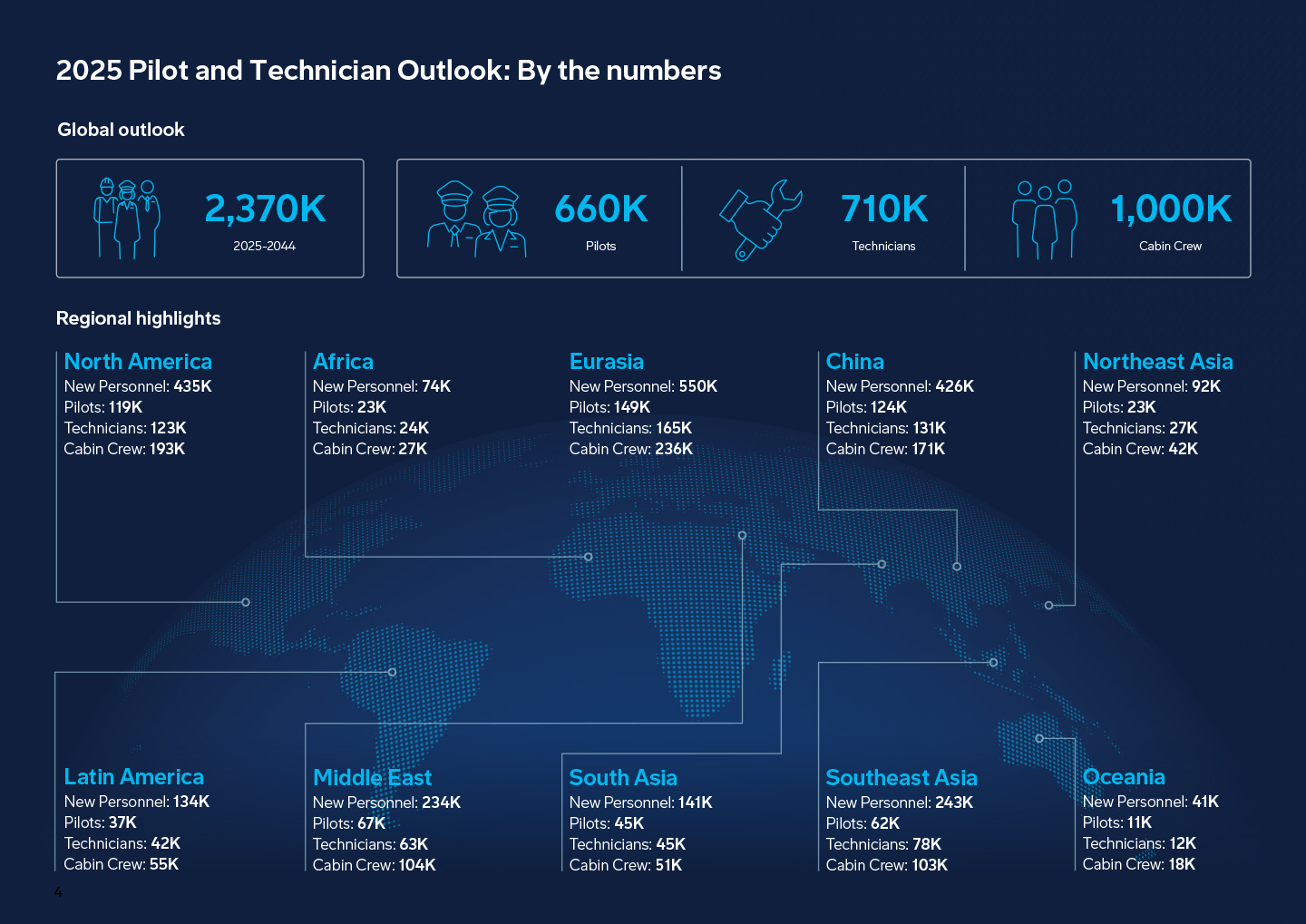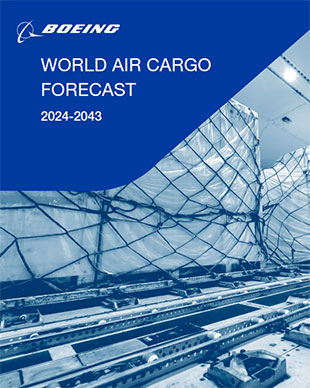This forecast is limited to the commercial aviation sector, which includes commercial passenger and commercial freight. Consistent with prior forecasts, this year’s outlook does not include business aviation and civil helicopter demand.
New-personnel demand is calculated on the basis of a 20-year fleet forecast for commercial aviation aircraft with more than 30 seats. By analyzing fleet growth and replacement, aircraft utilization, attrition rates, and regional differences in crewing specific to aircraft type, Boeing’s PTO estimates the number of new pilots, maintenance personnel, and cabin crew members needed worldwide to meet global traffic demand.
Year-over-year forecasts may vary due to many factors, including changes in regulations, crew productivity, and aircraft mix. The forecast does not include assumptions for single-pilot commercial airplane operations, but it does consider impacts from alternative modes of transportation such as advanced air mobility and high-speed rail. Boeing continues to track the market for indications of regulatory movement and will update our forecast accordingly.





